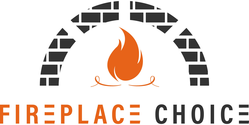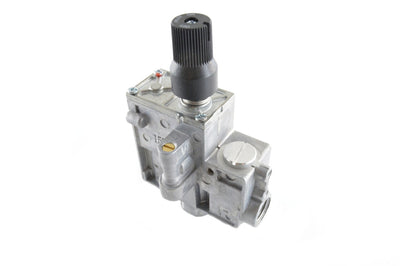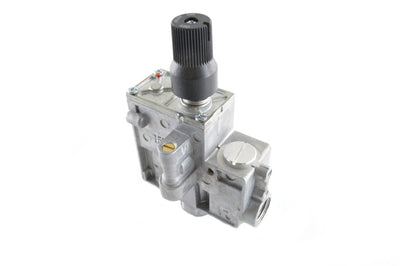How Much Firewood Do I Need For Winter?
A standard rule of thumb is that a 2,000-square-foot home will use six cords for a season, but an efficient stove or milder climate may require less.
Additionally, building efficient fires and properly measuring and storing firewood can also affect consumption. This guide will cover all these factors to help you determine the appropriate amount of firewood for your needs.
How much firewood you need depends on the type of wood stove or fireplace you have. Generally, an open fireplace without air restriction devices will use about one cord for every seven days of burning, while non-catalytic stoves can last 30-60 days with one cord, and catalytic stoves may only need one cord for the entire season.
How to Research Your Firewood Source
To help you accurately estimate how much firewood you need to last the winter, it's important to understand that firewood is typically sold by the cord.
Next, consider where you plan on purchasing your firewood from. Are you buying it from a reputable source or collecting it yourself?
WHAT IS A CORD OF WOOD?
A cord of wood is a term used to describe a neatly stacked pile of firewood that is 4 feet tall, 4 feet deep, and 8 feet wide. This includes the small gaps of space between the pieces of firewood. In order for it to technically be considered a cord, the wood must be arranged with very few spaces in between logs.
How much wood is in a cord? A cord is 128 cubic feet (which can be abbreviated as cft).
If the logs are stacked with a shallower depth, you would need a wider and taller pile to make a cord. For example, if the depth of the pile is only 2 feet instead of 4 feet, you would need a pile that was 16 feet wide and 4 feet high. Keep in mind that a cord is not always 128 cubic feet - it can be more or less depending on how the wood is stacked. But as long as it measures 4x4x8, it's a cord!

FULL CORD, STOVE CORD, CITY CORD, FACE CORD
The terms "kitchen cord," "face cord," and "stove cord" can also be used. However, they don't have definitions that are universally accepted or agreed upon.
It's important to keep in mind how much firewood you need will depend on several factors, including the climate, the size of your home, and the type of stove or fireplace you have.
To determine how much wood you'll need for the winter season, it's best to consult with a professional or do some research on local firewood guidelines. This way you can be sure you don't have too little or too much firewood you'll need.
When it comes to purchasing firewood for the winter, it's important to clarify the quantity being sold as well as the width of the logs.
A cord is a standard measurement, but other descriptions like "pile" or "truckload" can be unclear. Make sure you get a fair deal and enough firewood for your needs by asking for specifics.
How Much Heat Does A Cord Produce?
Measuring the heat output of wood is a bit more complicated than just counting the cord. The heat output is measured in MMBtu, which stands for British thermal unit.
The Btu is the amount of heat needed to raise one pound of water by one degree Fahrenheit. One MMBtu equals one million Btu. So, when you're looking at the amount of heat output for different varieties of wood, keep in mind that it's coming in at a high rate of speed.
Different varieties of wood produce different amounts of heat, but you can refer to this chart to compare the MMBtu per cord for different varieties of wood.
As a general rule, harder woods like oak and maple will produce more heat than softer woods like pine. But there are exceptions to every rule, so be sure to do your research before buying wood for your fireplace or wood stoves.

How Much Does a Cord of Wood Cost?
The cost of a cord of wood can vary widely depending on a number of factors. In general, hardwoods will be more expensive than softwoods, and the price will also depend on the specific type of wood.
The time of year is also a factor, as prices are typically higher in the winter when demand is higher. Location is also a factor, as wood is typically more expensive in cities where the cost of living is higher.
Finally, the quality of the wood will also affect the price, with higher-quality wood fetching a higher price.
In the southern US, a cord could cost around $150 - $200 during spring and summer and potentially up to $300 or more in the colder months.
Prices in northern states could potentially be even higher, ranging up to $400. Keep in mind that these are just rough estimates - it's always best to do some research for how much firewood you need and shop around for the best price for your specific needs.

Image Credit Wikipedia
When considering firewood costs, it is important to factor in additional expenses such as handling charges and delivery fees.
Did you know that in some areas, it's actually illegal to transport firewood? This law creates a market where the wood is overpriced. Purchasing a full cord of firewood is often more cost-effective than buying smaller quantities, as it eliminates the need for packaging and bundling.
When it comes to purchasing firewood for the winter, it's best to source it during the spring and summer when prices are typically lower due to decreased demand.
Some tree trimmers also sell firewood on the side. This is often a cheaper option, as the wood would otherwise go to waste, figure out how much wood you need before contacting them.
Not only should you take the type of wood into consideration when purchasing firewood for winter, but also how it has been stored and seasoned. Hardwoods, such as oak or cherry, are typically more expensive because they produce better fires.

Wood that has been recently cut, and therefore contains more moisture, is harder to burn and produces more smoke. Seasoned wood has had time to dry and burns more efficiently.
If you plan on seasoning your own firewood, allow at least six months for softwoods and a year for hardwoods before using them in your fireplace. It is recommended to invest in a moisture meter to properly assess your firewood supply.
Purchasing and Storing Your Firewood
Conifers, or softwoods, like spruce, fir, hemlock, larch, and pine, are not the best type of wood to burn in a wood-burning stove. While they may Burn hotter and faster than other types of wood, this could damage some stoves.
Hardwoods also tend to produce more smoke and contribute to the buildup of ash and soot in chimneys due to their high volume of sapwood. For these reasons, it is best to avoid burning conifers in your wood-burning stove.
Instead, hardwoods such as oak, maple, beech, ash, and cherry are recommended for firewood because they burn slower and at a lower temperature.
This not only helps to prolong the heat output of your fire, but it also helps to prevent damage to your wood-burning stove and reduces the buildup of ash and soot in your chimney.

In terms of cost efficiency, hardwoods provide a better return on investment. Keep in mind that freshly cut wood needs time to properly season before being burned – typically around 6-12 months of drying time – so plan ahead!
As for how much firewood you'll need for the winter season, it depends on factors such as the climate you live in and how often you use your wood-burning stove.
Before buying firewood, it is recommended to inspect the firewood in person to ensure its quality and proper stacking by the cord.
When it comes to storing firewood for the winter, it's important to keep the pile a safe distance from your home. This will prevent pests and rodents from easily accessing your house through the woodpile.
It's also best to use a rack or pallets to keep the wood off the ground and allow for proper airflow. Pesticides should never be used on firewood, as they can release harmful chemicals when burned inside your home.
When it comes to stacking firewood for the winter, it's important to consider airflow and organization. If you position split logs so that there is airflow running parallel to their length, the seasoning process will occur more quickly.
Covering the top with a tarp can protect from the elements, but leaving the sides partially exposed is also helpful. Creating a system where you use the drier, older wood first is also beneficial.

When it comes to storing your wood supply for the winter, it's important to follow safety guidelines. For wood stoves and freestanding fireplaces, make sure to check the manufacturer's instructions for proper storage clearance.
You should store firewood at least 36 inches away from the wood-burning appliance. If your stove or fireplace has a designated wood storage space, such as a pedestal or accessory shelf, it is safe to store wood there. Always prioritize following safety precautions when storing firewood.
Open Fireplaces And Firepits Open
If you're like me, you love the smell of burning wood in your home. Unfortunately, if you're not careful, you can also create a dangerous fire hazard. That's why it's important to follow some simple guidelines when storing wood near your wood stove or fireplace.
First, always make sure to store the wood at least 36 inches away from the appliance. And if your stove or fireplace has a designated storage area, then you can safely store the wood closer to the appliance.
Just be sure to read the manufacturer's guidelines for more detailed instructions. By following these simple tips, you can enjoy your wood-burning appliance without worry.

How To Best Stack Your Logs for A Better Fire
Consider how many cords you purchased and when arranging your logs, try stacking them in a top-down configuration rather than the traditional "log cabin" crisscross style.
This will create a slower and more efficient burn, as it eliminates the chimney effect. Experiment with different configurations to find the best burning method for your fireplace or wood stove.
HOW TO BUILD A TOP-DOWN FIRE
If you're looking for a foolproof way to build a fire, the top-down method is the way to go. This method starts with a layer of the largest logs, followed by a layer of medium-sized logs placed directly on top and perpendicular to the larger logs.
The next layer should consist of small (1 inch diameter) pieces of wood laid perpendicular to the medium-sized logs. Finally, put some small sticks and dried leaves on top of the newspaper.
When you're ready to light the fire, simply light the newspaper and watch as the flames gradually make their way down through the layers of wood. Not only is this method easy to follow, but it also helps to ensure that your fire will be long-lasting and evenly burning.

Image Credit Forno Piombo
ADAPTING AN OPEN FIREPLACE
You can make your open fireplace more heat efficient by adding glass doors with a vent control. This will give you more control over the amount of oxygen the fire gets.
Another modification is to add a grate in front of the fire. This will help to preheat the air that goes into the fireplace, making it easier to light the fire.
Both of these modifications will require professional approval before you attempt them. Be careful when changing the airflow of your fireplace to prevent any accidents. With these modifications, you can be sure that your fireplace is as efficient as possible.
Fireplaces and stoves that use closed combustion
Another option for a more efficient fireplace is to use a closed-combustion appliance.
These appliances have a fireproof chamber with glass doors that burns only as much as you need it to, thanks to air vents that manage the oxygen flow. More heat is converted into energy, leading to less heat lost up the chimney. This means you can save more wood, you need for winter will be less.
NON-CATALYTIC
If you're looking for an efficient and clean-burning wood stove, a non-catalytic model is a good option. These stoves typically burn cleaner and more efficiently than their catalytic counterparts, making them a great choice for those who want to heat their home efficiently.
On the high air setting, a non-catalytic stove can last for 3-4 hours on three 14-inch logs. If you set the air supply to a low or "overnight" setting, this can extend the timer by 6-8 hours.
With proper care and maintenance, a non-catalytic wood stove can go thirty-sixty days on a single cord, making it a great option for those who want to save money on their heating bill.
How many cords does a Non-Catalytic Wood Stove Use? What is its firewood usage? Depending on the unit and average outdoor temperature one cord may last 30-60, they use more firewood than a catalytic unit.
Buck Stove Model 81 Non Catalytic Wood Stove
CATALYTIC
If you're considering a new stove, you may have come across the term "catalytic." But what exactly is a catalytic stove, and how does it differ from a traditional model?
Catalytic stoves are significantly more efficient than regular models. Here's how it works: Air and other byproducts of combustion are passed through a metal-plated grate that ignites them. This provides more heat and reduces the amount of smoke and creosote.
Although they don't produce as much heat, these models work better at lower temperatures and are best for situations where you want a long-lasting fire that burns at a low temperature. So if you're looking for a stove that will give you a little extra warmth without breaking a sweat, a catalytic model may be just what you need.
Buck Stove Model 91 Catalytic Wood Stove
How much firewood does a a Catalytic Wood Stove use? Depending on the heating requirements and average outdoor temperature some of these stoves can last one season with a full cord of wood.
The main downside of using a catalytic stove is that the catalyst must be frequently cleaned to avoid clogging. If you use the proper fuel and follow the manufacturer's instructions, your catalyst should last approximately five years.
Another potential issue with catalytic stoves is that they require preheating before closing the damper; however, they are still an excellent option if efficiency is your goal.
Conclusion
How much firewood do I need for winter?
Winter can be a magical time of year, but it can also be expensive. Heating your home takes a lot of energy wether your heat with wood or natural gas, and if you have a fireplace, that means burning wood.
The cost of wood can fluctuate from season to season, so it's important to be prepared. Keep in mind that although an average wood consumption for different fireplace models might give you a fair idea of how much firewood you'll go through within one season, please remember that burn time as well as wood usage differs for each type of appliance.
Even appliances within the same category (e.g. fireplaces, stoves, inserts) may have different efficiency ratings.
Buying wood in bulk during the winter months is ideal because prices are lower. Storing the extras properly will ensure that you have enough to last until next season.
As a reminder, Non Catalytic Wood Stoves and an open fire pit will need more firewood (more wood cords) for winter.

Thanks for reading and have a great day.
- Tags: Firewood, wood stoves
← Older Post Newer Post →























